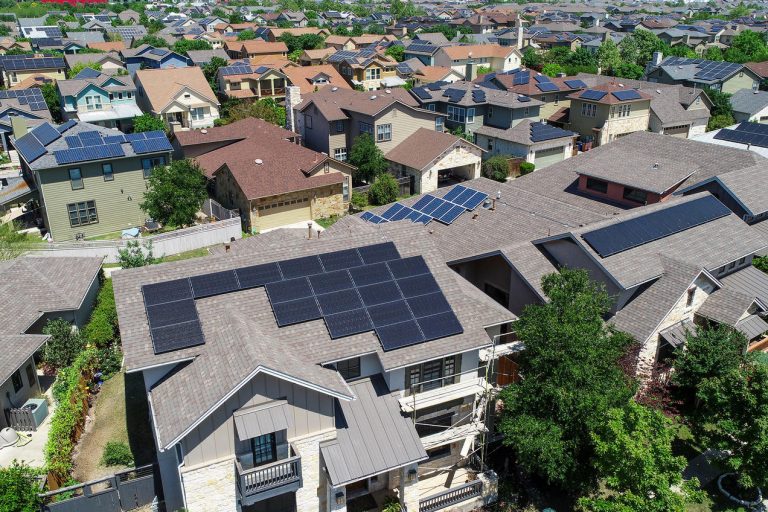In an era where energy efficiency is not just a preference but a necessity, pellet stoves have emerged as a compelling alternative to conventional heating methods. The question “Are pellet stoves energy efficient?” is increasingly relevant. That’s expected as homeowners seek sustainable and cost-effective home heating solutions. Unlike a traditional wood stove, installing a pellet stove offers a unique combination of convenience, efficiency, and environmental friendliness.
Hence, they are an attractive option for reducing their carbon footprint and heating costs. Find out more about pellet stove’s energy efficiency below.
What are Pellet Stoves?
Pellet stoves are advanced heating appliances that fuel compressed wood pellets or biomass. These stoves burn cleaner and more efficiently than conventional wood heaters or wood stoves.
The heart of a pellet stove is its hopper, where the wood pellets are stored and gradually fed into the combustion chamber through an automated system. This process allows for a steady, controlled burn that you can easily adjust to maintain the desired temperature.
Unlike wood-burning stoves that require manual loading and tending, pellet stoves offer the convenience of automated operation. However, they require electricity to power their mechanisms. Moreover, pellet fuel appliances produce significantly less air pollution than their wood-burning counterparts, making them a more environmentally friendly choice.
Energy Efficiency of Pellet Stoves
When discussing pellet stove efficiency, it’s important to note that these appliances are among the most efficient options available. EPA-certified pellet stoves typically boast an efficiency range of 70% to 83%, significantly higher than many wood stoves.
This efficiency rating indicates the percentage of heat the stove generates that is effectively used to warm the space, as opposed to being lost through the venting system. For comparison, conventional wood heaters and wood-burning stoves often have lower efficiency ratings.
However, the high efficiency of pellet stoves is partly due to their design, including a heat exchanger that maximizes the heat transferred to the room. It also hinges on the nature of wood pellets, which burn more completely and cleanly than traditional firewood.
Unlike natural gas or wood-burning options, pellet stoves require electricity to operate automated feeding systems and controls. While this adds to the overall pellet stove cost, the increased efficiency and lower environmental impact often offset these expenses.
Benefits of Using Pellet Stoves
Pellet stoves offer several advantages over conventional wood heaters and other traditional heating methods. One of their primary benefits is energy efficiency. Pellet stoves convert a high percentage of their fuel, burning pellets, into usable heat. This efficiency translates into more heat output per unit of fuel compared to wood-burning appliances, resulting in cost savings over time.
Another significant advantage is the reduction in air pollution. Wood pellet stoves produce less air pollution than traditional wood-burning stoves.
The pellets burn cleaner, and most pellet stoves’ sophisticated combustion chamber design ensures more complete fuel combustion. This minimizes the emission of harmful exhaust gases and enhances the heating process’s overall efficiency.
Additionally, the heat exchanger in pellet stoves maximizes the transfer of hot air into the living space, further improving their efficiency.
This feature ensures that the maximum heat is extracted from the burning pellets before the exhaust gases are vented out, reducing waste and increasing the heat output.
Practical Considerations
When opting for pellet heating, there are several practical aspects to consider. Firstly, pellet stoves require electricity to operate tet feeders and other controls. This dependency means that in the event of a power outage, the stove may not function unless there is a backup power source.
Another consideration is the maintenance requirements. While pellet stoves are easier to maintain than conventional wood-burning stoves, they still require regular cleaning to ensure efficient operation. You need to clean the combustion chamber, heat exchanger, and other components periodically to prevent ash build-up and ensure optimal performance.
It’s also essential to compare pellet stoves with other heating options like oil-fired or electric ones. While pellet stoves are generally more environmentally friendly and cost-effective in the long run, the initial investment and installation costs are higher.
Lastly, the availability of pellets and storage needs should be considered. Pellet-fired furnaces require a steady supply of pellets stored in a dry place. This requirement might necessitate planning for storage space and considering the logistics of pellet delivery.
In summary, pellet stoves stand out for making your home more energy efficient. It also reduces air pollution and gives high heat output. However, practical aspects like dependency on electricity, maintenance needs, and comparison with other heating systems should be carefully considered before making a decision. These stoves represent a modern solution for efficient home heating, balancing environmental responsibility with practicality and comfort. And ultimately, they are quite safe to use.
Pellet Stoves vs. Other Heating Options
Comparing pellet stoves to other heating options like wood stoves, natural gas systems, and fireplace inserts reveals efficiency, cost, and environmental impact differences.
Efficiency
Pellet stove efficiency is generally higher than traditional wood-burning stoves and fireplace inserts. This is because pellet stoves use a controlled feed rate and an efficient combustion process, ensuring the complete burning of wood pellets and other organic materials. The small flue pipe in pellet stoves contributes to less heat loss than the larger chimneys used with wood stoves.
Cost
While initial pellet stoves cost might be higher than some freestanding stoves or wood-burning stove options, they are often more cost-effective in the long run. That’s because of their higher efficiency and the relatively stable price of wood pellets. In contrast, natural gas prices can fluctuate significantly, affecting the running costs.
Environmental Impact
Pellet stoves burn wood pellets made from compressed organic materials, making them a more sustainable option. They produce less air pollution than the traditional wood-burning stove, where burning wood releases more particulates and gases. Natural gas systems, while efficient, still rely on fossil fuels, which have a higher environmental footprint.
How Much Energy Does a Pellet Stove Use?
The energy usage varies based on the model of the stove, its efficiency, and how it is operated.
Electrical Consumption
Powering Mechanisms
Pellet stoves require electricity to power their mechanical components, such as pellet feeders, fans, and electronic controls. This is a distinct aspect where pellet stoves differ from traditional wood stoves, which do not require electricity.
Average Electricity Use
The average electrical consumption of a pellet stove ranges from 100 to 400 watts, depending on the model and operating mode. If the stove runs continuously, this translates to about 2.4 to 9.6 kilowatt-hours (kWh) over 24 hours.
Impact on Electricity Bill
While this electrical usage might seem significant, it typically does not substantially increase the electricity bill. For instance, using a pellet stove for 24 hours at an average rate of 300 watts would consume about 7.2 kWh daily. If the electricity cost is approximately 12 cents per kWh, the daily cost would be about 86 cents.
Fuel Consumption
Pellet Usage
The amount of wood pellets a stove uses depends on its heat output and efficiency. Most pellet stoves consume between 1.5 to 3 pounds of pellets per hour when operating at total capacity.
Average Daily Use
Assuming a stove runs for about 12 hours daily at a moderate setting, it might use approximately 18 to 36 pounds of pellets daily.
Cost of Pellets
The cost of pellets varies, but on average, it ranges from $4 to $6 per 40-pound bag. Therefore, the daily cost of pellets can be roughly $1.80 to $5.40.
Efficiency Factor
Stove Efficiency
The energy efficiency of pellet stoves is crucial in determining their overall energy usage. Most modern pellet stoves have high efficiency, typically between 70% and 90%, which means they convert a large portion of the energy in the pellets into usable heat.

Heat Distribution
The efficiency of heat distribution also affects energy usage. Pellet stoves equipped with fans or blowers to distribute hot air throughout the room heat a space more effectively, potentially reducing the need for prolonged operation.
Is a Pellet Stove Right for You?
Deciding whether a pellet stove is the right heating solution for your home involves considering various factors, including your heating needs, budget, lifestyle, and environmental priorities.
Pellet stoves offer a unique blend of efficiency, convenience, and eco-friendliness but also have specific requirements and considerations.
Heating Requirements
- Space Size: Pellet stoves are effective in heating spaces ranging from small rooms to entire homes, depending on their size and heat output. Choosing a stove with the appropriate capacity for your space is crucial to ensure efficient heating.
- Climate: A pellet stove can be an excellent primary heat source in regions with harsh winters. In milder climates, it might serve as a supplementary heating option.
Budget Considerations
- Initial Cost: Pellet stoves generally have a higher initial cost than traditional wood stoves or basic electric heaters. This cost includes the stove itself and potential installation expenses.
- Running Costs: The ongoing costs of operating a pellet stove include the price of wood pellets and electricity to run the stove. While pellet stoves are energy-efficient, these costs vary based on pellet prices in your area and electricity rates.
Lifestyle and Convenience
- Maintenance: Pellet stoves require regular maintenance, including cleaning the ash pan, servicing the pellet feeder, and annual professional check-ups. Consider whether you’re willing to commit to these maintenance tasks.
- Fuel Storage: You’ll need to store wood pellets, which requires dry space. Consider whether you have adequate storage and the means to purchase and transport pellets.
Environmental Impact
- Sustainability: If reducing your carbon footprint is important, pellet stoves are attractive. They use biomass fuel, which is more sustainable and environmentally friendly than fossil fuels.
- Air Quality: Pellet stoves emit very little air pollution compared to traditional wood-burning stoves, making them a cleaner option for indoor and outdoor air quality.
Backup Heating and Power Outages
- Electricity Dependence: Pellet stoves require electricity to operate. If you live in an area with frequent power outages, consider whether this will be a limitation. Some models come with battery backups or can be connected to a generator.
Aesthetics and Ambiance
- Home Aesthetics: Pellet stoves have a unique aesthetic and add a cozy ambiance to a room, similar to traditional wood stoves. They come in various designs to fit different interior styles.
Bottom Line
Choosing between a pellet stove and an electric furnace depends on individual preferences, local fuel and electricity costs, maintenance capabilities, and environmental considerations. Pellet stoves offer the charm of a real flame and are more eco-friendly and cost-effective in the long run, but require more maintenance and a steady supply of pellets.
Electric furnaces offer ease of use and less maintenance. However, they may incur higher operational costs and have a more significant environmental impact unless powered by renewable energy sources. Assessing your specific needs, preferences, and circumstances will help determine if a pellet stove is the right choice for your home.






